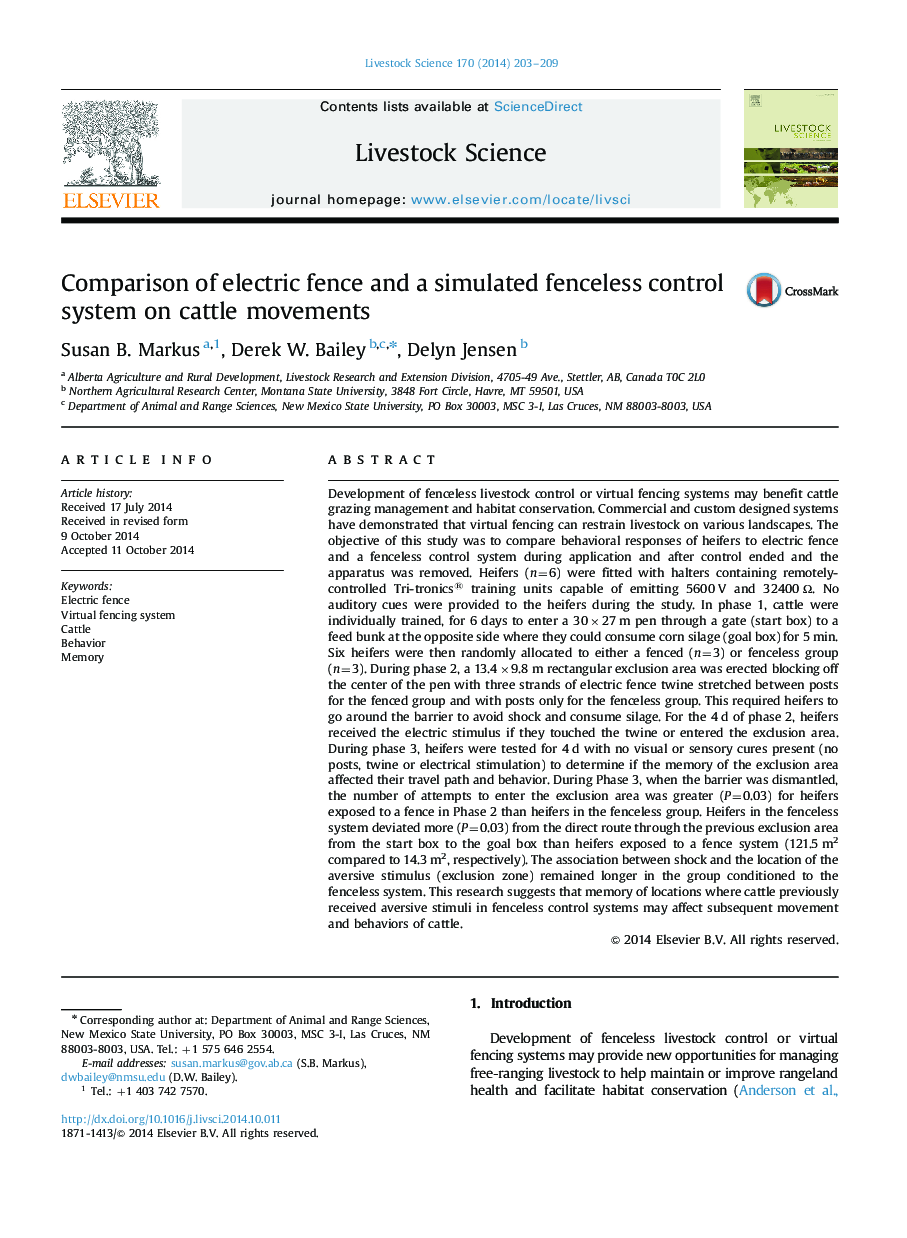| کد مقاله | کد نشریه | سال انتشار | مقاله انگلیسی | نسخه تمام متن |
|---|---|---|---|---|
| 2447182 | 1553962 | 2014 | 7 صفحه PDF | دانلود رایگان |
• Cattle quickly learn to avoid an exclusion area (rectangle) using both an electric fence and an animal borne fenceless control system.
• After the electric fence was dismantled heifers readily entered the exclusion area.
• After fenceless control system was stopped ended and all visual markers defining the previous location of the exclusion are were removed, heifers avoided the exclusion area for four days.
• Further research is needed to understand what factors were responsible for the heifers avoiding the exclusion area after electrical stimulation was shut off.
Development of fenceless livestock control or virtual fencing systems may benefit cattle grazing management and habitat conservation. Commercial and custom designed systems have demonstrated that virtual fencing can restrain livestock on various landscapes. The objective of this study was to compare behavioral responses of heifers to electric fence and a fenceless control system during application and after control ended and the apparatus was removed. Heifers (n=6) were fitted with halters containing remotely-controlled Tri-tronics® training units capable of emitting 5600 V and 32400 Ω. No auditory cues were provided to the heifers during the study. In phase 1, cattle were individually trained, for 6 days to enter a 30×27 m pen through a gate (start box) to a feed bunk at the opposite side where they could consume corn silage (goal box) for 5 min. Six heifers were then randomly allocated to either a fenced (n=3) or fenceless group (n=3). During phase 2, a 13.4×9.8 m rectangular exclusion area was erected blocking off the center of the pen with three strands of electric fence twine stretched between posts for the fenced group and with posts only for the fenceless group. This required heifers to go around the barrier to avoid shock and consume silage. For the 4 d of phase 2, heifers received the electric stimulus if they touched the twine or entered the exclusion area. During phase 3, heifers were tested for 4 d with no visual or sensory cures present (no posts, twine or electrical stimulation) to determine if the memory of the exclusion area affected their travel path and behavior. During Phase 3, when the barrier was dismantled, the number of attempts to enter the exclusion area was greater (P=0.03) for heifers exposed to a fence in Phase 2 than heifers in the fenceless group. Heifers in the fenceless system deviated more (P=0.03) from the direct route through the previous exclusion area from the start box to the goal box than heifers exposed to a fence system (121.5 m2 compared to 14.3 m2, respectively). The association between shock and the location of the aversive stimulus (exclusion zone) remained longer in the group conditioned to the fenceless system. This research suggests that memory of locations where cattle previously received aversive stimuli in fenceless control systems may affect subsequent movement and behaviors of cattle.
Journal: Livestock Science - Volume 170, December 2014, Pages 203–209
